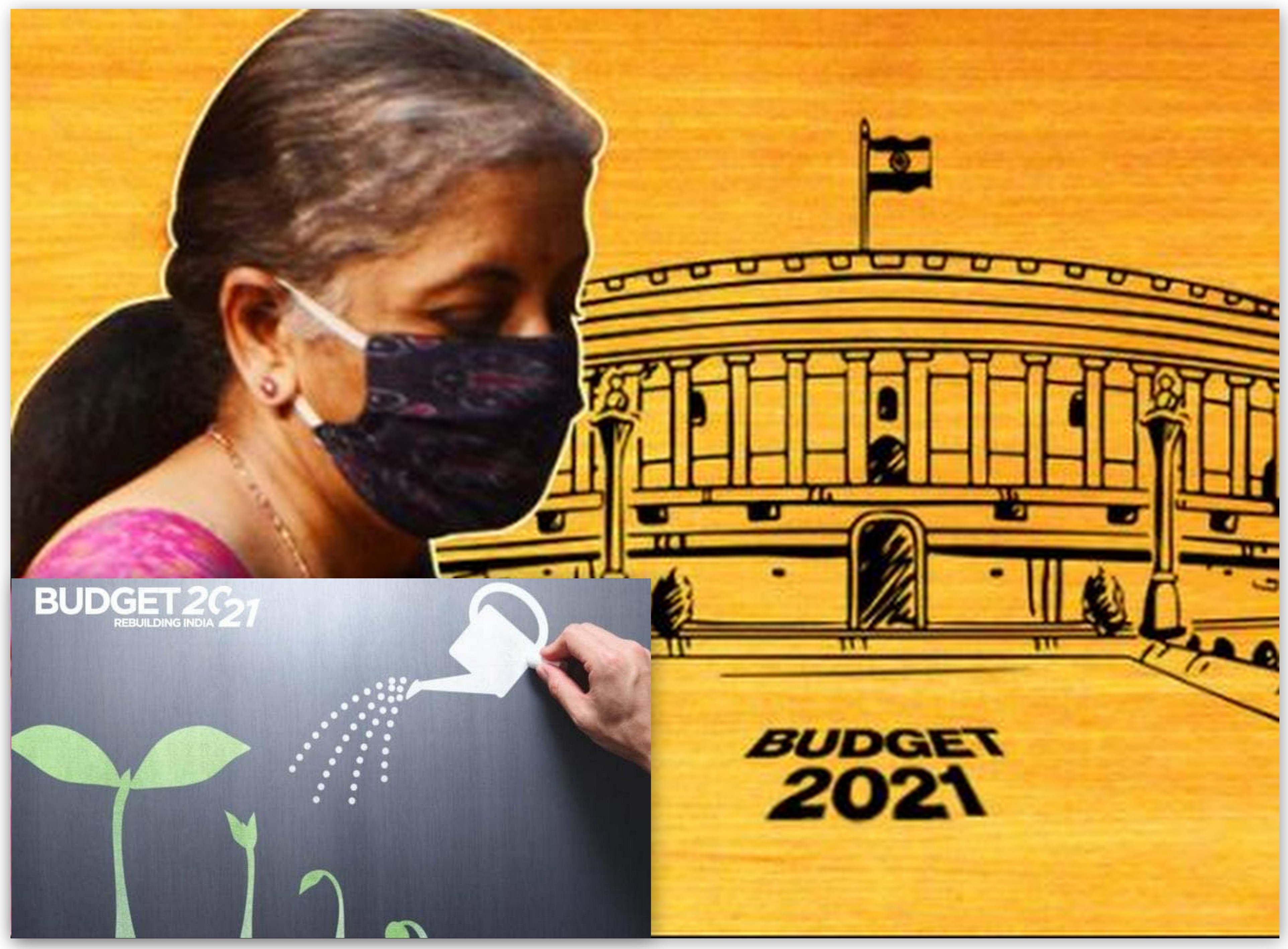Union Budget session 2021 began in Parliament at 11 am on Monday. During her Budget speech, the Finance Minister is expected to announce some changes in the tax rates & other doses for the battered economy.
Important Announcements on Railways, FDI, MSP, PSU divestment
FM announced to provide ₹1.1 lakh crore for Indian Railways in FY22 in Union Budget 2021. Of total, ₹1.07 lakh crore of provision to Indian Railway in FY22 will be for capital expenditure, she announced. Presenting the Union Budget for 2021-22, she said that Railways will monetize dedicated freight corridors.
FDI limit in the insurance sector was announced to be increased to 74% from now existing 49%. GOI has allowed foreign ownership in insurance with safeguards. The GOI will also launch a Securities Market Code which will include SEBI Act, Government Sec act, Depositories Act. SEBI will be notified as a regulator for a gold exchange. FM said that the GOI is proposing to strategically divest 2 PSU banks and 1 general insurance company. In 2021-22, the GOI would also bring the IPO of LIC for which it will be bringing the requisite amendments in this session itself, she said. The GOI will now also incentivize one-person companies. She added that the NCLT system will be strengthened, e-Courts will be adopted and alternate mechanism of debt resolution will be set up. She also announced decriminalization of LLP Act. MSP was assured at a price that is 1.5 times the cost of production ‘across all commodities’.
Focus was drawn on 6 pillars, which include, Health & Well-being, Inclusive Development, Human Capital, Innovation, and R&D.
Revisit of 2020
In 2020-21, a significant cut in the tax rates for the salaried class was announced, which, Sitharaman said, was to simplify the tax regime which was riddled with multiple exemptions and needed taxpayers to take the help of the professionals. Last year’s announcement ushered in a new tax regime where the taxpayer got the option of taking new rates without exemptions or sticking to old rates with exemptions.
As per the tax rates last year, income under Rs 2.5 per annum remained untaxable as it was earlier. Also, a tax of 5% was announced on income between Rs 2.5 to Rs 5 lakh and 10% for those earning from Rs 5 to Rs 7.5 lakh per annum, which were earlier 20 percent. The Finance Minister had also proposed 15 percent tax for those earning between Rs 7.5 lakh to Rs 10 lakh per annum and had said that those earning between Rs 10 lakh to Rs 12.5 lakh per annum will now have to pay 20 percent tax. Earlier it was 30 percent. The new tax rate applicable to those earning in the range of Rs 12.5 lakh per annum to Rs 15 lakh per annum was set at 25 percent and 30 percent tax was announced for salaries above Rs 15 lakh per annum.
Wishlist of Congress leaders-healthcare and defence non-negotiables
Former Congress President Rahul Gandhi, ahead of the budget presentation, today listed out three sectors where expenditure needs to be ramped up by Sitharaman. In a tweet, Gandhi said, “Support MSMEs, farmers and workers to generate employment. Increase Healthcare expenditure to save lives. Increase Defence expenditure to safeguard borders.”
Earlier, his colleague P. Chidamabaram stated that healthcare and defence were the non-negotiables. He also said that the outlay for these two sectors has to be increased to save the people and protect the borders.
On January 28, the Congress suggested a ten-point policy prescription to put the economy back on track. Among the suggestions were: fiscal stimulus to economy, direct cash transfers to the families at the bottom of the economy, a rescue plan for MSMEs to revive closed units, reduction of tax rates, especially GST and other indirect tax rates, recapitalization of public sector banks, bilateral trade agreements, sector-specific revival packages for Telecommunication, Power, Mining, Construction, Aviation, and Tourism and Hospitality.
Important Highlights of Economic Survey 2021-on RBI & MPC
The Economic Survey said that the monetary policy transmission has improved resulting in fast lowering of interest rate for borrowers. Despite a reduction in rates by 250 basis points since February 2019, credit growth of banks slowed down to 6.7 percent as on January 1, 2021.
The credit off-take from banking sector witnessed a broad-based slowdown in 2020-21 due to the outbreak of COVID-19 pandemic.
“RBI has reduced repo rate by 250 bps since February 2019 (the current easing cycle). The transmission of policy repo rate changes has been weak on the quantity of credit. However, there has been improved transmission on rate structure and term structure,” the survey said.
Also Read: Role of Monetary Policy committee during the pandemic induced lockdown
As a result of accommodative monetary policy during 2020, the RBI has cut benchmark repo rate cut by 115 bps since March 2020 with 75 bps cut in first Monetary Policy Committee (MPC) meeting in March 2020 and 40 bps cut in the second meeting in May 2020.
Also, systemic liquidity in 2020-21 remained in surplus while RBI undertook various conventional and unconventional measures to manage liquidity situation in the economy.





